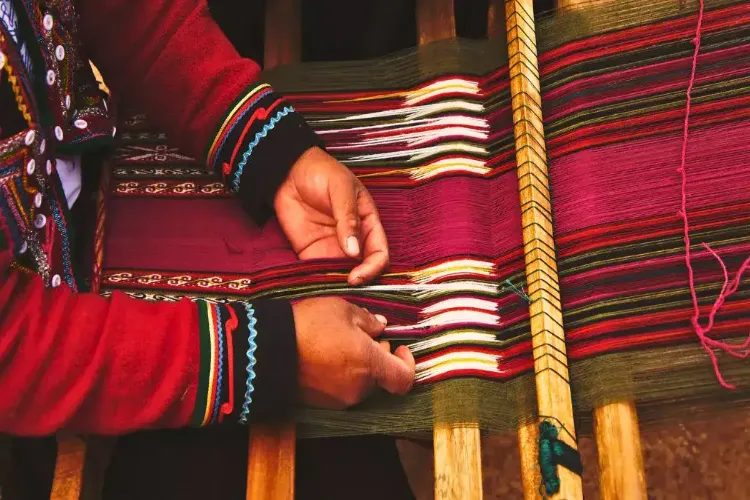
New Delhi
Lepcha textiles are woven narratives of a community's history, beliefs, and identity. Lepcha weaving is a centuries-old tradition practiced by the indigenous Lepcha community in Sikkim, Darjeeling (West Bengal), and parts of Bhutan and Nepal. Using a traditional backstrap loin-loom, artisans create intricate textiles that are deeply connected to their heritage and identity. However, this craft faces modern challenges that threaten its survival.
According to Tshering Wangchuk Lepcha, Sikkim Kranti Morcha (SKM) party’s student wing president, the Lepchas are considered the original inhabitants of Sikkim, and they have a profound connection with their land and traditions. “Lepcha weaving is predominantly practised in regions like Dzongu in North Sikkim, a reserve established to preserve Lepcha culture. This area remains a stronghold for traditional practices, including weaving. The textiles produced here are renowned for their vibrant colours and intricate patterns, each telling a story of the community’s deep-rooted traditions,” Wangchuk told indianexpress.com.
Traditionally, Lepcha textiles are woven on backstrap looms, a method passed down through generations. “The weaver sits on the floor with the loom attached to their back, allowing for precise control over tension and pattern creation. This technique, while labour-intensive, enables the creation of intricate patterns characteristic of Lepcha textiles,” Wangchuk said.
“Their intricate patterns draw inspiration from nature, mythology, and sacred symbols, reflecting the depth of Lepcha heritage,” said Rashmi Sridhara, design professor of Fashion and Apparel Design at the School of Design, MIT-WPU, Pune. She also shared that Lepcha textiles are primarily used in their traditional attire—the Dum-vum (women’s dress) and Dum-praa (men’s dress).
In the past, nettle fibres were the primary material, but today, cotton and woollen yarns are predominantly used. Incorporating vegetable dyes and synthetic colours enhances the vibrancy of the textiles. The weaving process is meticulous, with a single piece often taking several days to complete, depending on the complexity of the design.
Sridhara also recommended hacks to maintain fabric quality: “Store it in a cool, dry place and avoid direct sunlight to prevent fading. It can also be folded with tissue paper to protect the weave and dry cleaned periodically.”
The traditional craft of Lepcha weaving, however, faces significant challenges, with economic pressures and cultural erosion threatening its survival. “The labour-intensive nature of traditional weaving makes the products more expensive than mass-produced alternatives. This price disparity often leads consumers to opt for cheaper, machine-made imitations, primarily imported from neighbouring countries,” said Wangchuk.
He also pointed out that the influx of inexpensive, counterfeit products not only undermines the economic viability of traditional weaving but also poses a threat to the preservation of authentic Lepcha designs and techniques.
Recognising the need to preserve this dying craft, the Government of Sikkim established the Directorate of Handicrafts and Handloom (DHH) in 1957. “Through its seventeen training centers across the state, the DHH has trained approximately 2,000 weavers, ensuring the transmission of skills to newer generations,” said Wangchuk.
Small entrepreneurs and local designers have entered the market, capitalising on the growing demand for modernised Lepcha apparel. Social media is further amplifying awareness of ethnic fashion, allowing artisans to reach global audiences.
To appeal more to the younger generations, traditional motifs are being incorporated into modern apparel and accessories. To meet market demands without compromising on authenticity, efficient production processes are being put in place. Workshops and exhibitions are being conducted to raise awareness about the cultural significance of Lepcha textiles.
READ MORE: Behibagh Mourns the loss of ex-soldier Manzoor Ahmad Waghey
Lepcha textiles are woven narratives of a community’s history, beliefs, and identity. While challenges persist, dedicated efforts by artisans, the government, and designers aim to preserve and rejuvenate this traditional craft, ensuring that the legacy of Lepcha weaving continues to thrive in the modern era.
